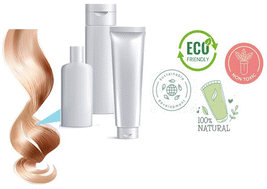Physico-chemical challenges on the self-assembly of natural and bio-based ingredients on hair surfaces: towards sustainable haircare formulations
Abstract
Polymers and surfactants are used in many technological and industrial applications such as the manufacture of functional materials and coatings, personal care and pharmaceutical products, food science, paints, anti-icing fluids, tertiary oil recovery and the paper industry. Polymer–surfactant mixtures are particularly important in shampoos and conditioners. However, as in almost every other industry over the past five or more decades, the performance of hair care formulations has been significantly improved by the use of petrochemical-derived ingredients. As a result, cosmetic formulations, and hair care formulations in particular, have been based primarily on polymers and surfactants that are neither renewable, nor derived from environmentally friendly processes, nor have a positive environmental impact. This contrasts with the extensive use of natural and renewable products, mainly plant extracts, in cosmetics in ancient times. Therefore, the substitution of currently used ingredients with others of natural origin has been a top priority for the cosmetic industry over the last two decades, and in order to achieve greater consumer acceptance, it is crucial to maintain and, where possible, improve the technical performance of such products. This paper describes the complexities and challenges of developing greener shampoo and conditioner ingredients and formulations to meet current and future needs, and outlines a methodological approach based on model hair surfaces and a selection of appropriate experimental and numerical techniques to achieve our goals. Some encouraging technical routes using biosurfactants, biopolymers and bio-based polymers are presented, along with the significant opportunity to obtain a wide range of green ingredients through molecular design and well-controlled biotechnological processes. Similar concerns apply to other cosmetic products such as waxes, fragrances, bleaching agents, etc.

- This article is part of the themed collections: 2023 Green Chemistry Reviews and International Symposium on Green Chemistry 2022


 Please wait while we load your content...
Please wait while we load your content...